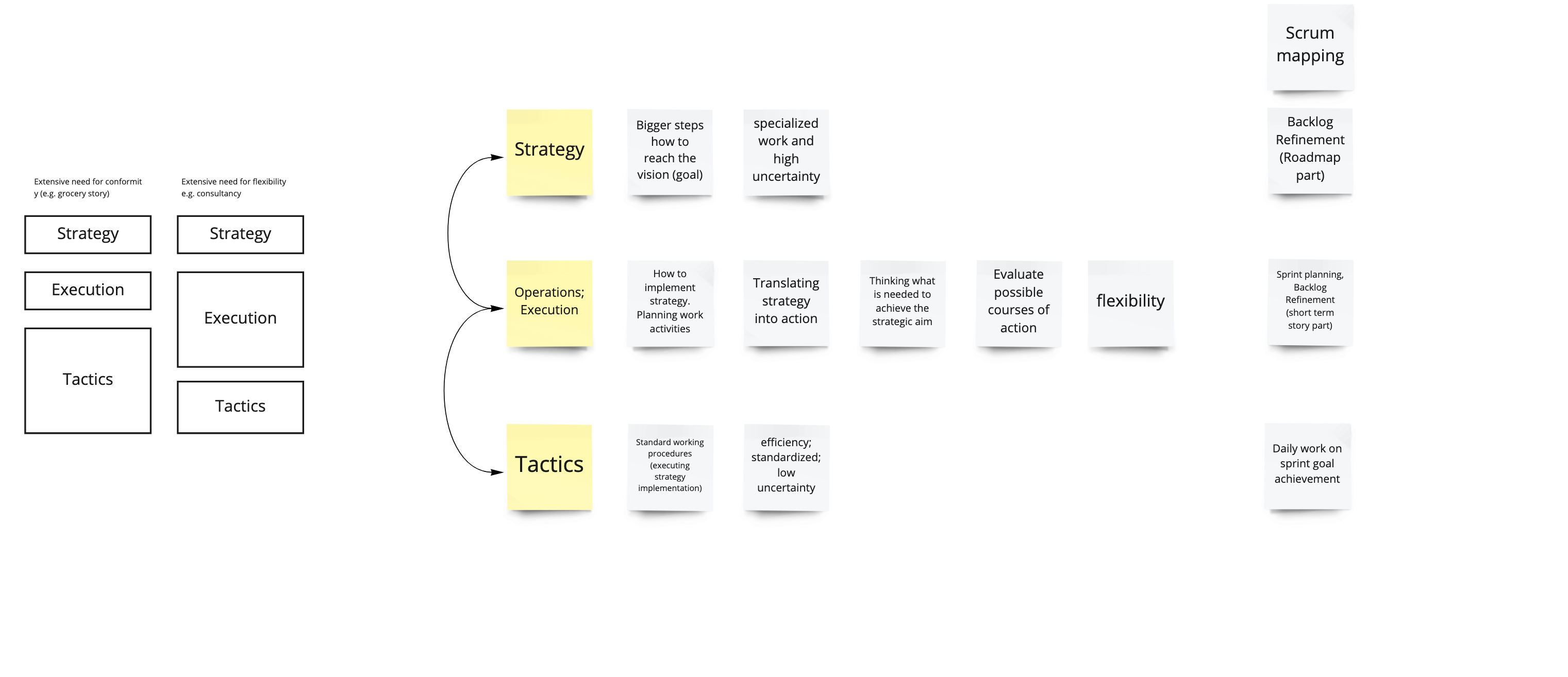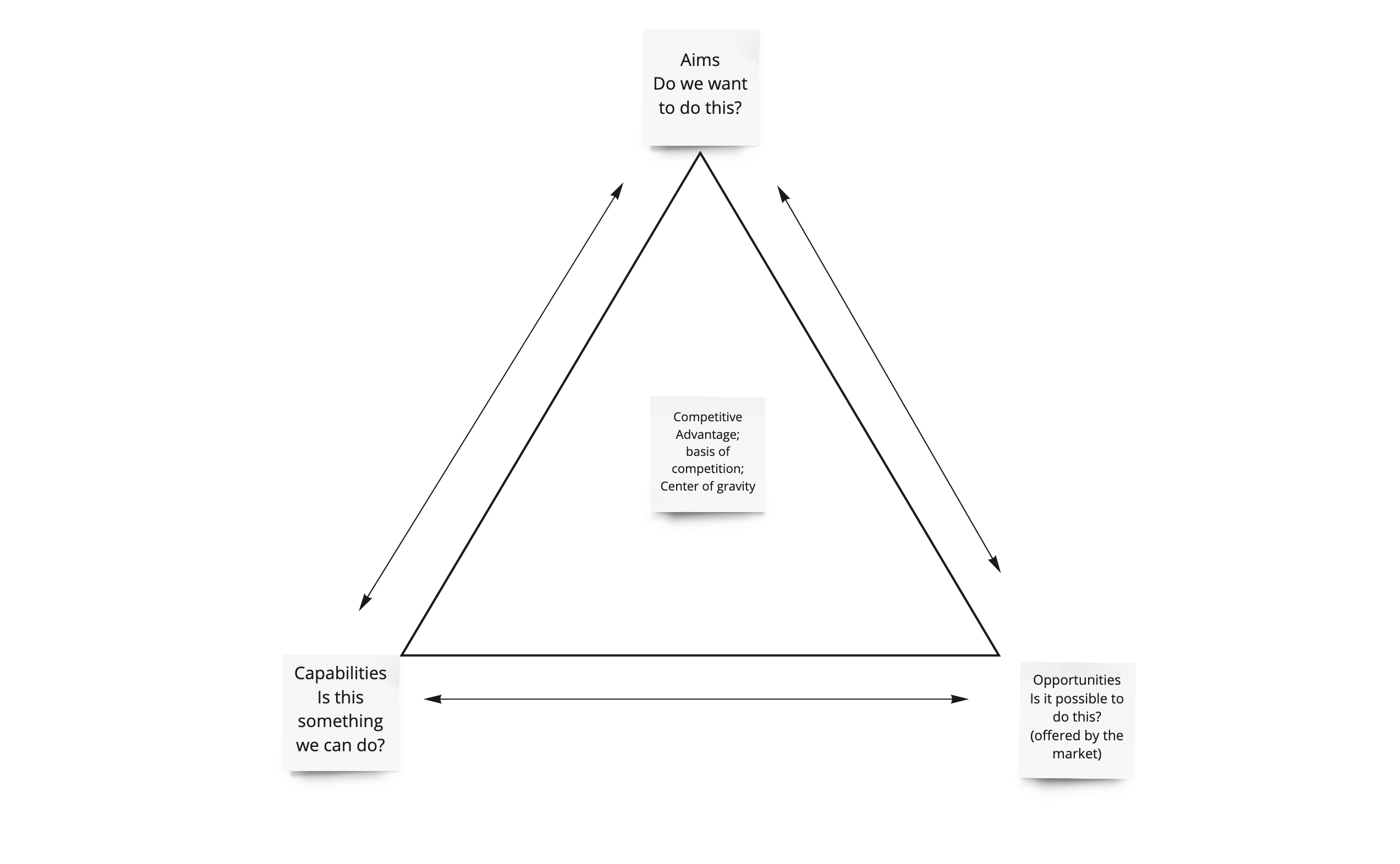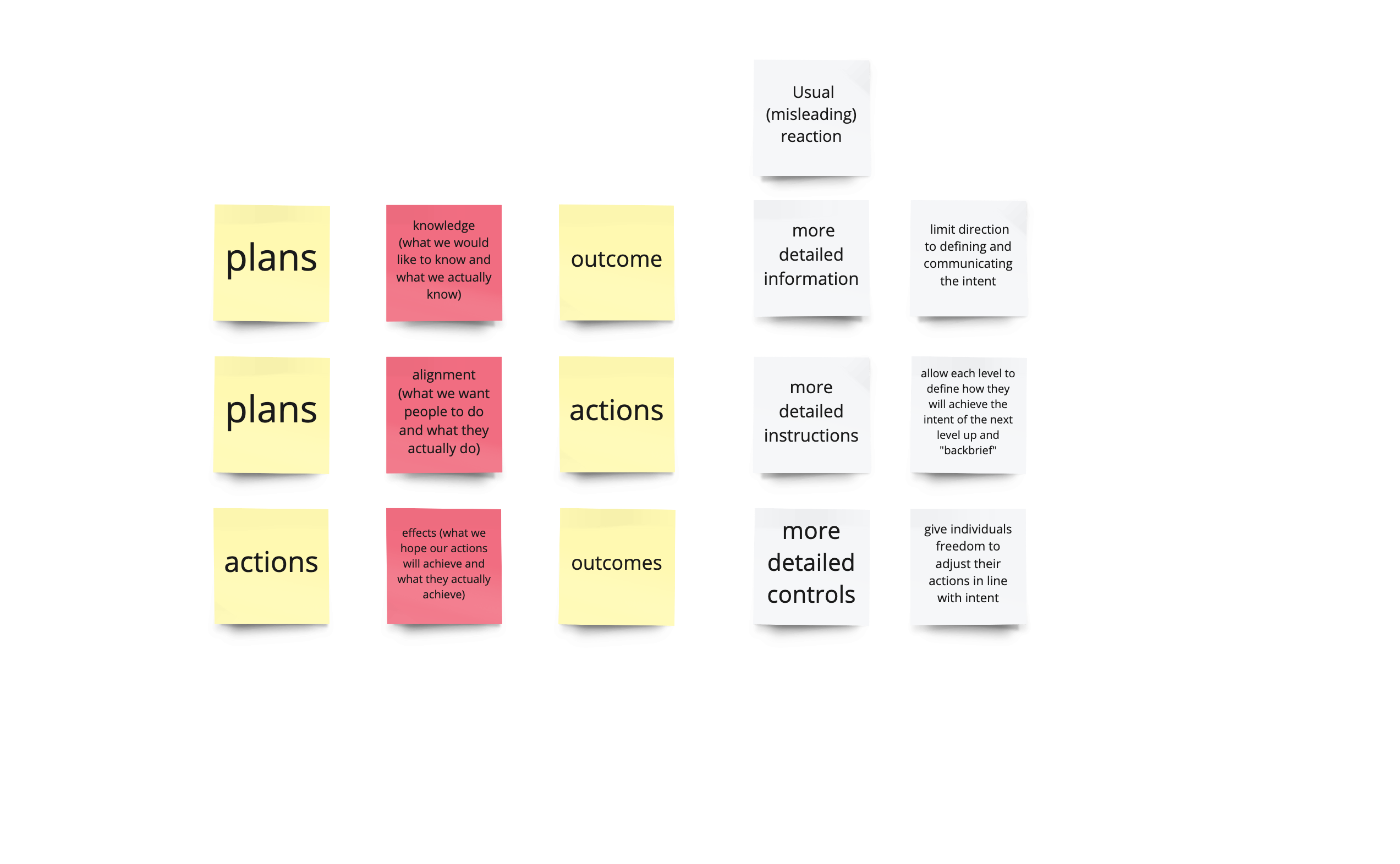Extract from The Art of Action
What do you want me to do? Are important strategic and operational decisions quickly translated into action?
3 Levels - Strategy, Operations/Execution and Tactics
 The higher the level of command, the shorter and more general orders should be.
The higher the level of command, the shorter and more general orders should be.
The next level should add whatever further specification feels to be necessary, and the details of execution are left to verbal instructions or perhaps a word of command. This ensures that everyone retains freedom of movement and decision within the bounds of their authority. And order should contain all, but also only, what subordinates cannot determine for themselves to achieve a particular purpose.
Demand high autonomy and high alignment at one and the same time. The more alignment you have the more autonomy you can grant. Alignment needs to be achieved around intent. Autonomy should be granted around actions taken in order to achieve the intent.
Trinity of Directing, Leadership and Management
Mission
The basis of leadership are the mission and the situation.
The mission identifies the goal to be achieved and must always be the point of focus. A mission which tries to encompass multiple tasks can all too easily obscure what really matters.
While you should obviously try to find out as much as possible, waiting for more information on a critical situation is seldom a sign of incisive leadership, and often a serious mistake.
Mission and situation lead to a decision. A decision should pursue a clear goal with all the means available.
Directed opportunism
Keep actions rapidly and keep adjusting what you are doing. Do-and-adapt model. Strategy development and execution
About Friction
Between Plan and Execution is Friction: totality of uncertainties, errors, accidents, technical difficulties, unforeseen & difficulties on decisions, morale and actions.
Strategy has to take friction into account
Sources of friction
- Imperfect information
- Imperfect transmitting and processing of information
- External factors
- Strategy & Strategy execution
A plan of what to do to achieve certain outcomes and to make sure planned actions are carried out until outcomes are achieved
Strategy is a system of expedients. It is more than science, is it the application of knowledge to practical life, the evolution of an original guiding idea under constantly changing circumstances, that art of taking action under the pressure of the most difficult conditions. A strategy enables people to reflect on activity and gives them a rationale for deciding what to do next.
How are we going to compete?

A strategy needs to phrase an intent: An intent is the decision to do something now (a task) in order to achieve an outcome (a purpose). This is different from a plan as with the 3 gaps we cannot plan an outcome but only express the will to achieve it.
3 major gaps

Principles
- Decide what really matters
- The business environment is unpredictable and uncertain, so we should expect the unexpected and should not plan beyond the circumstances we can foresee
- Work out the outcomes to achieve
- Define strategy as an intent
- Get the message across
- Explain intentions and don’t tell what to doExplain the WHY
- Ask for what they are going to do
- Give people space and support
- Provide broad boundaries
Main claims
- The business environment is unpredictable and uncertain, so we should expect the unexpected and should not plan beyond the circumstances we can foresee
- Within the constraints of our limited knowledge we should strive to identify the essentials of a situation and make choices about what is most important to achieve
- To allow people to take effective action, we must make sure they understand what they are to achieve and why
- They should then explain what they are going to do as a result, define the implied tasks, and check back with us
- They should then assign the tasks they have defined to individuals who are accountable for achieving them, and specify the boundaries within which they are free to act
- Everyone must have the skills and resources to do what is needed and the space to take independent decisions and action when the unexpected occurs, as it will
- As the situation changes, everyone should be expected to adapt their actions according to their best judgement in order to achieve the intended outcomes
- People will only show the level of initiative required if they believe that the organization will support them
- What has not been made simple cannot be made clear and what is not clear will not get done
Trinity of Directing, Leadership and Management
Trinity of Directing, Leadership and Management
Strategy briefing template
Context
What is the situation? State of knowledge: What is known; What is probable but uncertain; What is not known but could be relevant?
Provide clarity about the implications of what the organization has to do.
Higher intent
- Phrased as a task + purpose. What to achieve now and why.
- One level up (my boss)
- Two levels up (my boss’s boss)
My intent
- What are we trying to achieve and why?
What:
In order to …
Why?
Measures
- <…>
- <…>
Implied tasks
Main task; Responsibility; Timing
Which task is the main effort?
Boundaries
Freedoms
Constraints
Backbrief: Has the situation changed?
- No - our brief is valid
- Yes - we have to change some tasks, but what we are trying to achieve is still valid
- Yes - and we have to change what we are trying to achieve